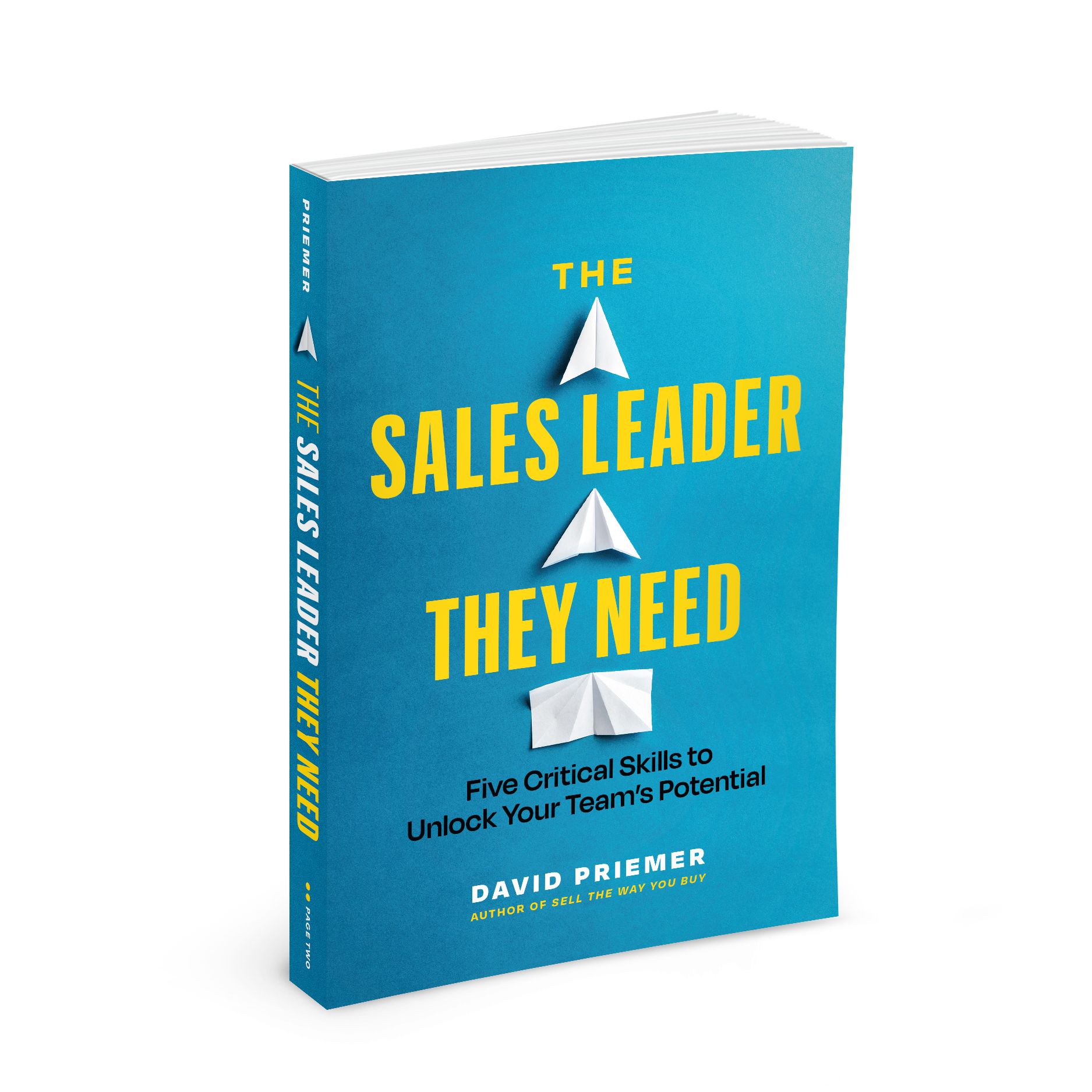The Surprising Science Behind Ordering Your Discovery Questions
Many sellers know that when it comes to running high-impact discovery, chaining multiple questions together can help you establish your value proposition. The most common of these approaches are layered questions. For example:
- Can you tell me about your problem?
- Can you give me an example of it?
- How long have you been experiencing this problem?
- What have you done to address it?
- How has that been going?
- What have you done to address it?
- How long have you been experiencing this problem?
- Can you give me an example of it?
Like a doctor asking a patient about an ailment, these basic layered questions help us uncover facts. The approach forces us to start off with higher level, general questions then slowly drill down to the specifics. Simple and intuitive.
While this approach can certainly be effective, if you’re asking questions exclusively in this way, you may be missing out on an incredible opportunity to create massive emotional contrast in the mind of your customer! In other words, your layered questions may be thought-provoking but not feeling-provoking.
Research has shown that 95% of our purchasing decisions are emotionally driven. That means that when it comes to sales discovery, asking questions that stir emotional awareness of the problem is critical. If your questions help the customer feel the pain associated with their current state, your chances of motivating to make a purchase will significantly increase.
Science tells us that it’s not just asking the right questions that can produce this reaction. The order of the questions themselves that can have an equally important impact.
In the bestselling book, Thinking Fast and Slow, author and Nobel Prize winner, Daniel Kahneman recounts a survey of German students where each respondent was asked two questions:
How happy are you these days?
How many dates did you have last month?
The hypothesis of the experimenters was that there would be a correlation between the two answers. After all, it’s reasonable to assume that students with an active dating life would be happier overall than those struggling in that department. Surprisingly, the correlation between the two answers was just about zero! As it turns out, the activeness of ones dating life was not what immediately came to mind when the students were asked about their level of happiness.
However, a different group of students saw the questions in reverse order:
How many dates did you have last month?
How happy are you these days?
In this case, the degree of correlation was off the charts! So why the difference in results between the two approaches? The secret lies in a principle Kahneman refers to as a substitution heuristic.
The Power of the Substitution Heuristic
The idea behind the substitution heuristic is simple. When your brain encounters a question it finds hard to answer it naturally looks for a question based on the original but that’s easier to answer. This is called a heuristic question. For example, if I asked you what 17 x 24 was you might be challenged to compute the total in your head. However, if I pushed you to try, your brain might consider multiplying 20 x 20 as a “close enough” shortcut. The heuristic question yields an easy answer of 400 whereas the original question yields a more difficult, but not far off (2% to be precise), answer of 408.
The same thing happens with the two questions above. Asking someone about the degree to which they’re happy overall is difficult to answer. There are many factors that feed into one’s happiness. However, when students were asked about the number of dates they had, the degree to which they were happy with their dating life became top-of-mind. That feeling then influenced the answer to the second question about overall happiness. In other words, since overall happiness is harder to compute, the respondent’s brain simply used the heuristic of dating life happiness it recently encountered to answer the second question!
Armed with this critical insight into how people process information, the same approach can be used to produce higher levels of contrast in our sales questioning. For example, consider the two question pairs below:
1. Are you happy with your overall level of fitness?
2. How often have you been to the gym in the past month?
1. How do you feel about the level of employee engagement at your company?
2. How do your employees feel about the performance review process?
1. How satisfied are you with the service you receive from Vendor X?
2. How often did you need to call Vendor X for help this year?
1. How do you feel about your sales team’s ability to connect with customers?
2. Do you like talking to salespeople?
In each case, the first question is what most sellers start with because they are thought-provoking, higher level and strategic. They act as good springboards to more detailed questions. The problem is because they are more nuanced and difficult to answer, they are not feeling-provoking. In other words, they do not produce a rapid emotional response and as a result, may fail to activate the buyer’s sense of pain and loss (both important when it comes to motivating buyers to move).
By first asking a more specific question whose prevailing feeling and sentiment comes to mind easier (like the first in each pair), the answer to the more strategic question will be influenced in your favor. For example:
1. How often have you been to the gym in the past month?
2. Are you happy with your overall level of fitness?
1. How do your employees feel about the performance review process?
2. How do you feel about the level of employee engagement at your company?
1. How often did you need to call Vendor X for help this year?
2. How satisfied are you with the service you receive from Vendor X?
1. Do you like talking to salespeople?
2. How do you feel about your own sales team’s ability to connect with customers?
So the next time you’re conducting sales discovery with your customer, consider modifying the order in which you ask your question and lead with emotionally driven questions first! It can have a HUGE impact on the emotional contrast you create in the mind of your customer.
BONUS TRAINING: Boosting the Emotional Impact of Your Questions
BONUS VIDEO: A POWERFUL Tactic for Ordering Your Discovery Questions
We promise never to send you junk or share your email! Just helpful sales insights.














Leave a Reply
Want to join the discussion?Feel free to contribute!